An interview with the Canadian comic artist Steven Gilbert, author of the graphic novel Colville.
What’s the story behind the Colville book? How did you published it in the beginning and what happened then?
Colville was my attempt at making a small town crime story. It draws on some real events that happened near my home town of Newmarket in the early 1990s, as well as incorporating some fictional elements. It was self-published and distributed internationally through comic book stores. Not long after Colville was published I opened my own comics shop here in Newmarket. I was so busy running the store that I basically stopped making comics for almost fifteen years. That initial version of Colville was much shorter than the newer graphic novel version. It was only 64 page. Over the years since it came out I had many ideas on how to expand the material. The new book is that final expanded version.

What kind of elements came from real life? There is some sort not so subtle general critic of suburban life of one’s hometown (yours?).
The elements of the bike theft is from a real story. The confrontation at the school yard is as accurate as I could make it, based on the newspaper accounts at the time. The Paul character is a real person who was criminally active in this area at that time, but had absolutely nothing to do with this story. His inclusion is entirely fictional. I was not consciously trying to be critical of small town life.
Do you think Colville would have been different or would it exist if you’d live you’re life in a city?
I doubt Colville would exist if I were from anywhere other that my town. I have never lived in a big city. I think almost all of my creative work has been somehow linked to where I am from.
How did you work on the story? What made it start?
What made the story start was simply a desire to make a crime comic. I like some crime fiction, and thought I’d try to tell a story in that genre. The story of this motorbike theft had stayed in my mind for several years and it seemed like the right material to follow. I don’t do a lot of pre-planning when making comics. I will think about the story and the visuals, sometimes for months or years. But I don’t write any script or make thumbnails. Everything is drawn directly on the page, starting from one and going until it is finished.
The most crude aspect of the story reminded me of the novel Forty Words for Sorrow by the Canadian writer Giles Blunt, that came out later then Colville. Do you know it?
I have not seen the show Cardinal, but have seen the commercials for it. I am a pretty huge fan of David Lynch’s Blue Velvet and Twin Peaks, they are probably a more pronounced influence.
You dedicate this work to Nick Cave and Brian De Palma. I can detect some of their influences, but did you mention them? If so, how did they influence you?
I listened to Nick Cave on a pretty constant loop while drawing the early Colville pages back in the 1990s, I like his music a lot. To get back in the mood of the story, I listened to his stuff quite a bit while creating the new pages. I also listened to The Velvet Underground, Beastie Boys, Tom Waits, and Elvis Costello (especially Mighty Like A Rose) while drawing the newer material. I like Brian DePalma’s movies. There are a couple of sequences in Colville that I was probably trying to emulate the style and tone of some of his movies.
You don’t spare to quote and mention lots of comics authors in Colville, many of them, Canadians. Do you feel part of the same “family” of indie Canadian creators that began in the 90s? What do you feel has changed?
I think I was just name checking some cartoonists that I liked at the time. I certainly did not think I was part of any larger community of cartoonists. I have been lucky over the years to meet and become friendly with some of my cartooning idols, but that interaction is on a very limited basis. I still tend to make comics in virtual isolation from any other cartoonists. That hasn’t changed over the years.
Considering that you mention lots of cartoonists from the recent past in your book, which artists would you recommend from the current comics scene?
I am pretty stuck within my “generation” of cartoonists, and get very excited when I see a new book or comic from those 80/90s cartoonists. Some newer artists that I like are Noah Van Sciver, Michael Deforge, Ben Marra, Jim Rugg, Connor Willumson, Tim Lane, and Wm. Bobo.
How did you start making comics?
I feel like I have always been drawing comics. It is part of my memory of my entire life. I was drawn to animation as a small child, especially Bugs Bunny. I always had a giant supply of blank paper and all the pencils and pens that I needed. When I discovered Marvel comics, I think I knew that drawing comics was my goal in life. I am lucky that my parents and teachers seemed to always encourage my cartooning.
You self published lots books and minis, Colville as well. Why this choice? Did you ever tried working with a regular publisher?
I had a friend back in the 90s who self-published some comics, there was a bit of a trend in North America to do so. Likely because of the success of books like Cerebus and Bone. Lots of cartoonists were doing it and the marketplace seemed to make room for self-published comics. There was even a “Spirits Of Independence” tour of self-publishing cartoonists back then. I think it worked for me because I felt my material was not commercial enough for a publisher to take on. I also didn’t think I was good enough for the couple of publishers back then that were doing the kind of comics that I really liked. Plus, as a self-publisher, I did not have to make any concessions in content.
Are you into the current DIY scene? What do you think has changed over the years?
I wouldn’t say I have much real connection to any DIY scene, other than being generally encouraging of people making their own thing. There are a couple of really great indy-focused comics shows near me (in Toronto). One, TCAF, is internationally known, and an amazing thing to be apart of. The other, Canzine, is an annual Toronto mini-comic/zine festival. It is great. Even when I don’t table at these shows, I go and buy a lot of comics. In Newmarket, there doesn’t seem to be much of a cartooning scene. I try to encourage any cartoonist locally, but it is rare to seen any work actually accomplished. It does happen, but seems pretty rare.
What are you currently working on?
Apart from Colville, I have also made two volumes of The Journal Of The Main Street Secret Lodge, a series of historic adventure stories set in Newmarket during the 1800s. I have just completed a new graphic novel called No Beast So Fierce, which I will likely publish next year. I also am making a series of mini-comix called Port Stanley, on of which is finished and printed, a second one is upcoming. I have a short comic that I have just begun, called Colville chapter eight, which is kind of set in the town of Colville. Lastly, I am planning a third volume of The Journal Of The Main Street Secret Logde, which I’d like to start drawing later this spring.


